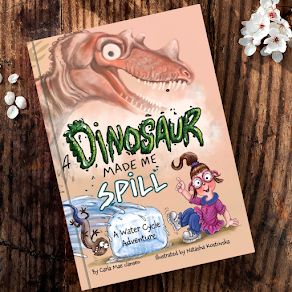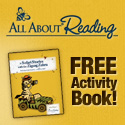One of my children's all time favorite books about outdoor fun is Mercer Mayer's Just Me and My Dad:
It has just about everything...camping, fishing, scary stories, and a very naughty little bear!
Normally, I'd share some awesome outdoor-themed activities, experiments, or printables, but this month my kids and I have been on vacation, visiting family and celebrating my sister's wedding.
Be sure to stop by these other bloggers for fabulous outdoor-themed activities and books!!
You can also enter the awesome Outdoors Bundle Giveaway below!!
a Rafflecopter giveaway
It has just about everything...camping, fishing, scary stories, and a very naughty little bear!
Normally, I'd share some awesome outdoor-themed activities, experiments, or printables, but this month my kids and I have been on vacation, visiting family and celebrating my sister's wedding.
Be sure to stop by these other bloggers for fabulous outdoor-themed activities and books!!
Enchanted Homeschooling Mom ~ 3 Dinosaurs ~ To the Moon and Back ~ Planet Smarty Pants ~ Farm Fresh Adventures ~ Growing in God's Grace ~ Chestnut Grove Academy ~ Learning and Growing the Piwi Way ~ The Usual Mayhem~ Preschool Powol Packets ~ Monsters Ed Homeschool Academy ~ Adventures in Mommydom ~ Teach Beside Me ~ Life with Moore Babies ~ Kathy's Cluttered Mind ~ Are We There Yet? ~ Our Crafts N Things ~ Hopkins Homeschool ~ ABC Creative Learning ~ Joy Focused Learning ~ P is for Preschooler ~ Laugh and Learn ~ A Mommy's Adventures ~ Inspiring 2 New Hampshire Children ~ World for Learning ~ Ever After in the Woods ~ Golden Grasses ~ A glimpse of our life ~ Journey to Excellence ~ Happy Little Homemaker ~ Little Homeschool Blessings ~ Raventhreads ~ Tots and Me ~ As We Walk Along The Road ~ Stir the Wonder ~ For This Season ~ Where Imagination Grows ~ Lextin Academy ~ The Canadian Homeschooler ~ School Time Snippets ~ Peakle Pie ~ A Moment in our World ~ Every Bed of Roses ~ Finchnwren ~ At Home Where Life Happens ~ The Library Adventure ~ Embracing Destiny ~ Day by Day in our World ~ Our Homeschool Studio ~ A "Peace" of Mind ~ Thou Shall Not Whine ~ SAHM I am ~ eLeMeNo-P Kids ~ Simple Living Mama
You can also enter the awesome Outdoors Bundle Giveaway below!!
Poppins Book Nook Great Outdoors Bundle Giveaway! Every month the Poppins Book Nook group will be offering readers a chance to win a brand new storybook or product that ties in with our theme for the month. This month one lucky entrant will win a copy of the classic storybook Amelia Bedelia Goes Camping as no one brings that certain flair and fun to the great outdoors like Amelia Bedelia. The winner will also win an Uncle Milton Nat Geo Starry Night Lantern so whether you live in the countryside or in the city your child can experience some of the great outdoors while reading your storybook.
Entrants must be 18 years or older and reside in a country that receives U.S. Postal mail. This giveaway is brought to you by the company Enchanted Homeschooling Mom who is owner and founder of the Poppins Book Nook. By entering this giveaway you are also acknowledging that you have read and agree to all of the Rafflecopter terms & conditions as well as Enchanted Homeschooling Mom's disclosures found here {http://
a Rafflecopter giveaway

I may share at any of these parties!






















































